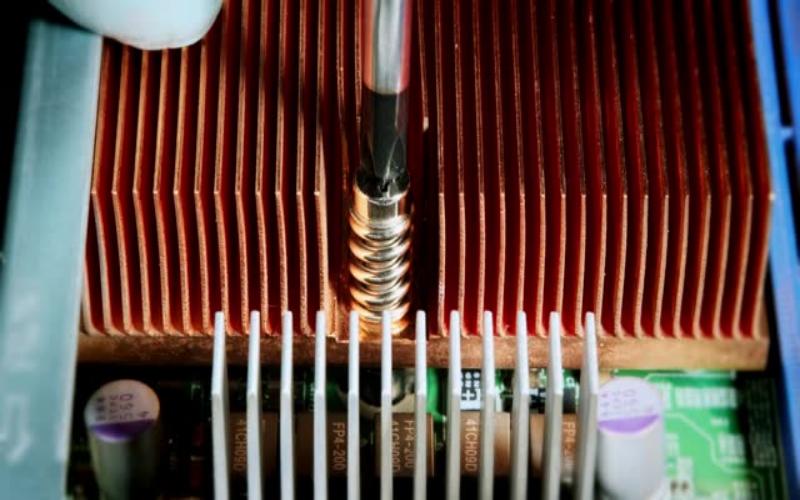What is a heat sink in a building? Explained in Detail
Introduction
When it comes to designing energy-efficient buildings, one term that often comes up is "heat sink." But what exactly is a heat sink in a building? In this article, we will delve into the concept of heat sinks, their importance in building design, and how they contribute to energy conservation. Let's explore further!
The Basics of Heat Sinks
A heat sink, in the context of building design, is a component or area within a building that absorbs and dissipates excessive heat. It acts as a thermal mass, helping to regulate the temperature within the building and reduce the need for additional heating or cooling systems. Heat sinks are strategically placed in areas where heat tends to accumulate, such as near windows, under direct sunlight, or in areas with high electrical equipment usage.
Types of Heat Sinks
There are several types of heat sinks commonly used in building design:
1. Passive Heat Sinks
Passive heat sinks rely on natural convection and radiation to dissipate heat. They do not require any external power source or mechanical components, making them energy-efficient and cost-effective. Examples of passive heat sinks include concrete floors, walls, and ceilings.
2. Active Heat Sinks
Active heat sinks, on the other hand, utilize mechanical systems such as fans or pumps to enhance heat dissipation. They are often used in conjunction with passive heat sinks to provide additional cooling capacity in areas where natural convection is insufficient.
3. Phase Change Materials (PCMs)
Phase change materials are substances that can absorb and release large amounts of heat during phase transitions, such as solid to liquid or liquid to gas. They are used as heat sinks by storing excess heat during the day and releasing it at night when the temperature drops.
4. Water-Based Heat Sinks
Water-based heat sinks, also known as hydronic systems, use water as a medium to absorb and transfer heat. They are often integrated into the building's HVAC (heating, ventilation, and air conditioning) system and can provide efficient cooling or heating depending on the requirements.
The Importance of Heat Sinks in Building Design
Heat sinks play a crucial role in building design and energy conservation. Here are some key reasons why they are important:
1. Energy Efficiency
By utilizing heat sinks, buildings can reduce their reliance on mechanical heating and cooling systems, leading to significant energy savings. Heat sinks help to stabilize the indoor temperature, reducing the need for excessive heating or cooling, especially in areas with fluctuating weather conditions.
2. Thermal Comfort
Heat sinks contribute to thermal comfort by minimizing temperature variations within the building. They act as a buffer, absorbing excess heat during the day and releasing it slowly at night, creating a more stable and comfortable environment for occupants.
3. Cost Savings
With reduced energy consumption comes cost savings. By incorporating heat sinks into building design, owners can lower their utility bills and operating expenses in the long run. The initial investment in heat sink systems can be recouped through energy savings over time.
4. Environmental Benefits
Energy-efficient buildings with effective heat sink systems have a smaller carbon footprint. By reducing energy consumption, heat sinks help mitigate greenhouse gas emissions and contribute to a more sustainable built environment.
Considerations for Implementing Heat Sinks
While heat sinks offer numerous benefits, their implementation requires careful consideration. Here are a few factors to keep in mind:
1. Building Orientation and Design
The orientation and design of the building play a crucial role in determining the effectiveness of heat sinks. Proper placement of windows, shading devices, and insulation can help optimize heat sink performance.
2. Material Selection
The choice of materials for heat sinks is important. High-density materials like concrete or stone have a higher thermal mass and can store more heat. Selecting the right materials can enhance the efficiency of heat sinks.
3. Integration with HVAC Systems
Integrating heat sinks with HVAC systems allows for better control and optimization of temperature regulation. This integration ensures that heat sinks work in harmony with other cooling or heating mechanisms in the building.
In Conclusion
Heat sinks are an integral part of building design, aiding in energy conservation, thermal comfort, and cost savings. By understanding the concept of heat sinks and their different types, building owners and designers can create more sustainable and efficient structures. Implementing heat sinks requires careful planning and consideration, but the long-term benefits make it a worthwhile investment.

